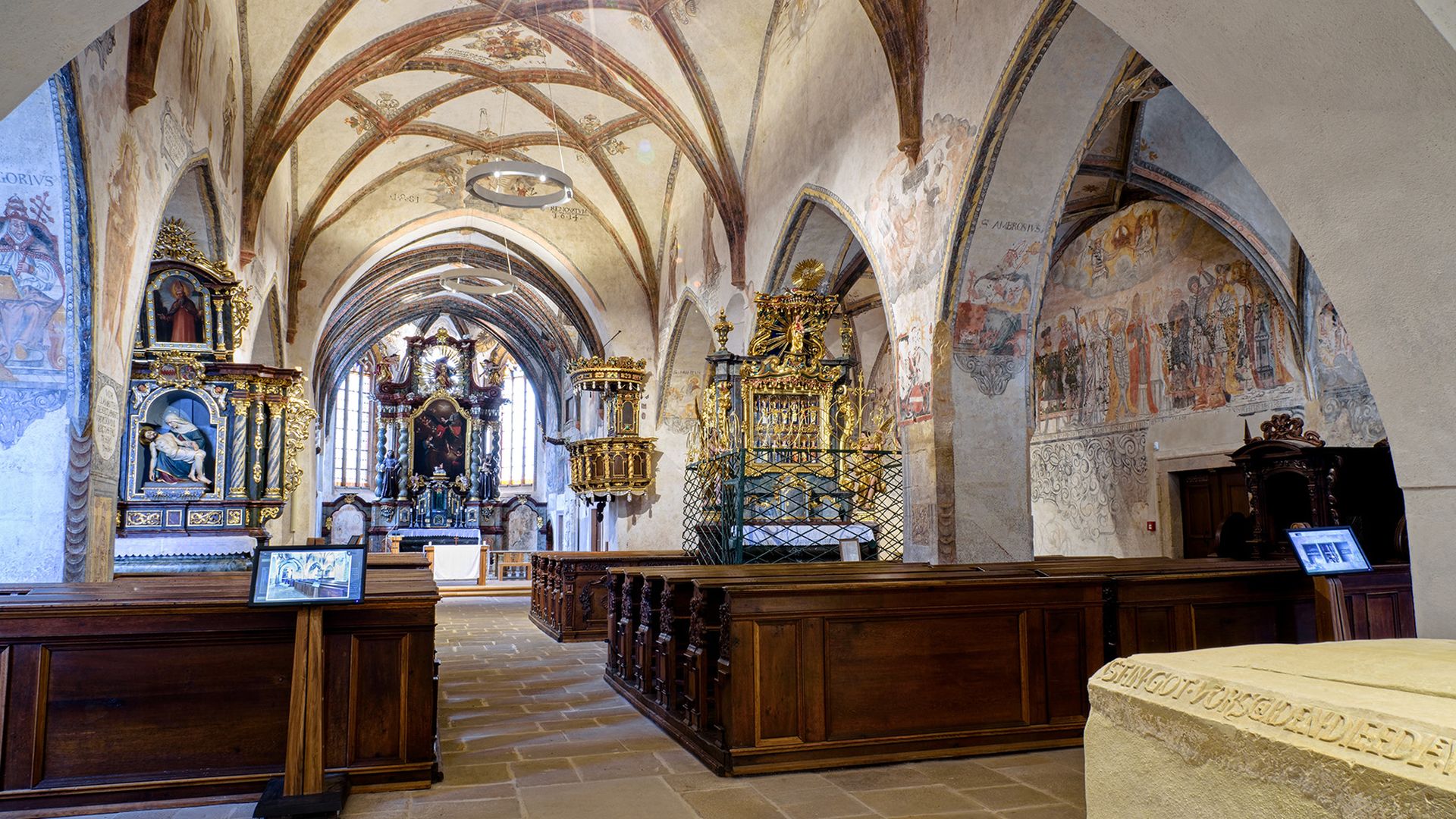
City Museum of Kadan
City Museum of Kadan
The Society of Friends of the Museum of Kadan was founded in 1903 when the city museum was also founded as a city allowance organization. It held exhibitions in the premises of the parish school, gradually expanding to the Rosary Chapel and House No. 115 at the square. After World War II, the museum was run by the people’s committee and from 1960 it functioned as the District Museum of Homeland Studies. After the people’s committees were cancelled, the buildings at the square gradually became unsuitable for exhibition purposes of the city museum and the exhibits were relocated to the castle building in 1973 to be stored there. The city museum was abolished in 1975 and the collections were transferred to the District Museum of Chomutov.
The City Museum of Kadan was re-established in 1999 when the mineralogy exhibition was opened in the basement of the Franciscan Monastery. In 2004, the Life in the Monastery exhibition was inaugurated, covering the major part of the medieval monastery including the church. In the following year, the museum opened an exhibition dedicated to the history of the city, being situated in the dormitory cells. Later, the City Museum started to manage new exhibitions in the Kadan Castle, in the medieval bastion and in the town hall. The visitors can see six museum exhibitions in Kadan at present.
Franciscan Monastery
The Franciscan Monastery lies on the edge of the town of Kadan, Czech Republic and near the river Ohre. Its history dates back to the 15th century. It is now the seat of the Municipal Museum of Kadan with e.g. the exposition of the conventual life. The church dedication to Fourteen Holy Helpers shows the contacts to then popular German shrines of the same cult. Around the building is a beautiful vineyard, a French park and a lot of plum trees. The monastery was ranked among the national cultural monuments by the Ministry of Culture of the Czech Republic in 1995. The monastery faces the Uhost hill on the opposite slope of the Ohre valley.
For more information about the Usti Region, from which this museum comes, click here and here.
NOTE: Many features on this website require JavaScript. You can enable JavaScript via your browser's preference settings.